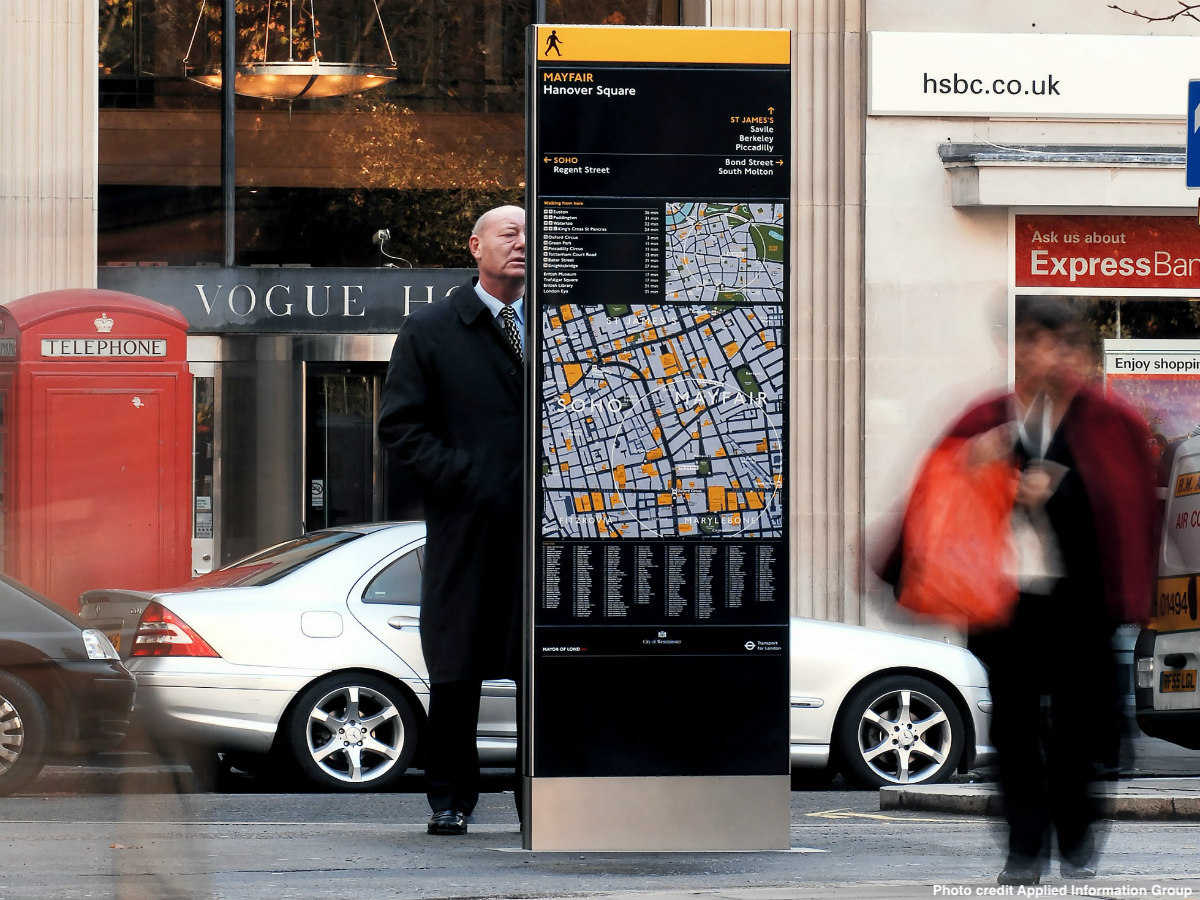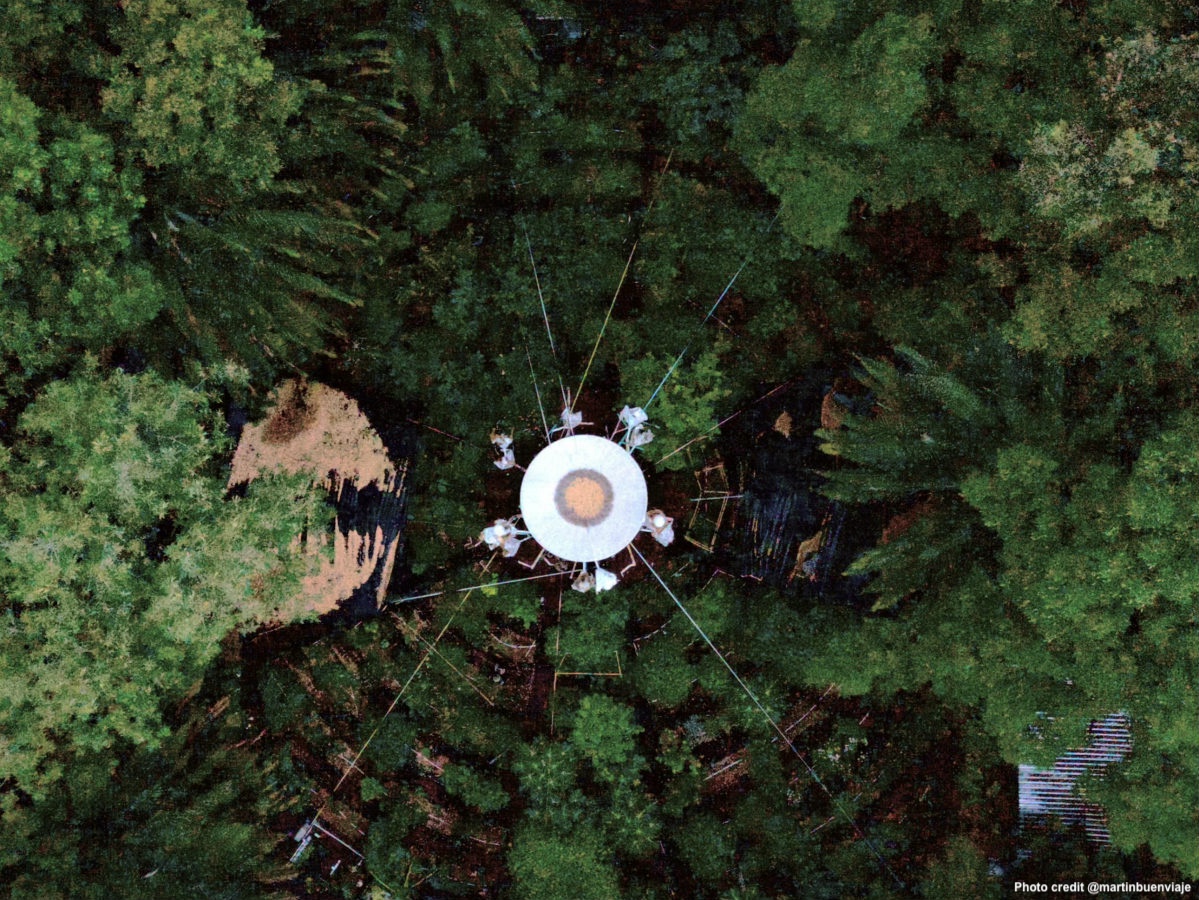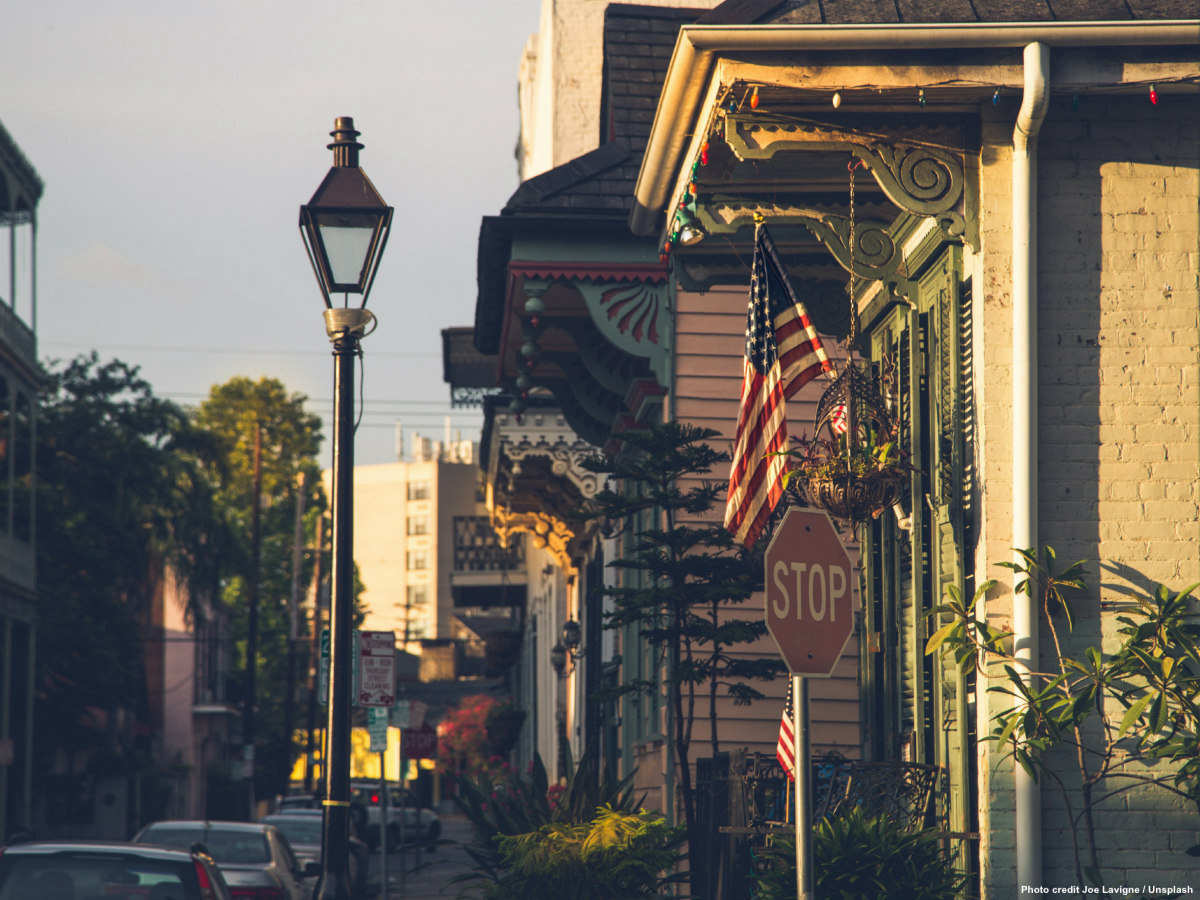When I met Tim Fendley, the plan was to go for a walk with him in London. With its mews, small alleys and high streets, this dense city is optimal for walking but difficult terrain to navigate. Much has been written about walkable cities, less though, about wayfinding. But the two are invariably interconnected.
Fendley is an ideal walking partner to discuss this with: as a Londoner passionate about cities, he has spent nearly twenty years diving into how people think when it comes to walking. He describes what he does as “looking for Eureka moments”. “You go to work by car and then one day you try walking, and realise, oh I can do it, and it goes faster than the traffic. Look at this!” he adds.
The day before we met I arrived by Eurostar at St Pancras train station. It is late at night and I am glad to encounter straight away a street sign at eye level that explains easily the way I should follow. Behind this street sign is Fendley’s signature project. Legible London, as it is called, is a comprehensive wayfinding system with over 1500 signs throughout London that Fendley’s practice, Applied Information Group, has developed like in other places such as Rio de Janeiro.
Fendley has been working with cities long enough to know that real problems start in how cities administer themselves. The various organisations, systems and district administrations that run a city find it difficult to integrate. “It leaves us having to respond to these barriers because the public just wants to get to the destination.”
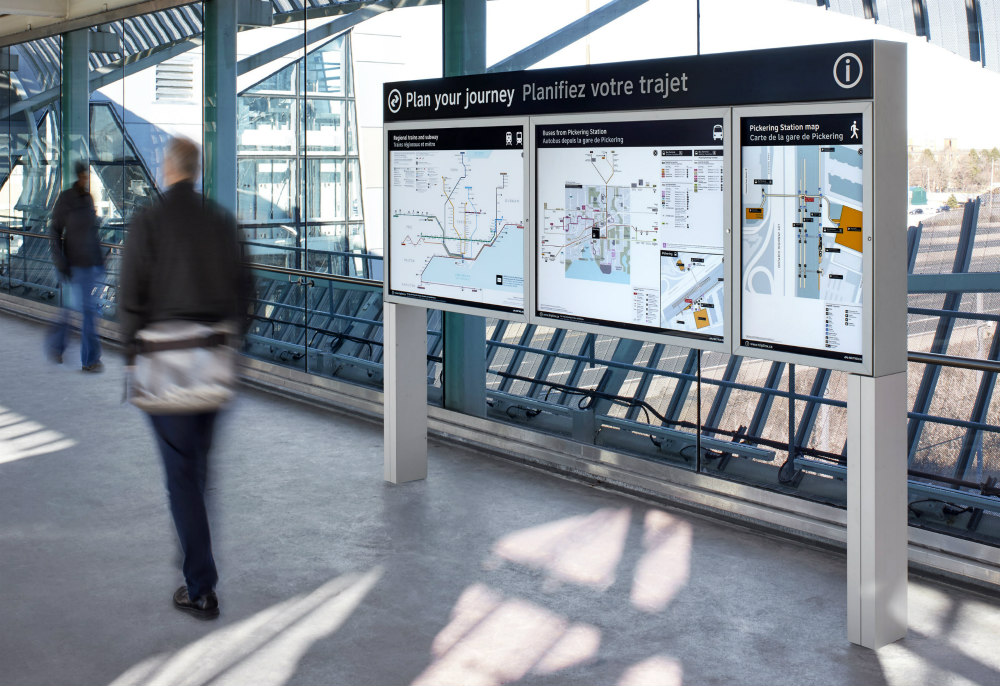
Alone in central London,an Applied study found 36 different pedestrian wayfinding systems, some using metres, others miles, yards, minutes, a blue walking person, a silver sign and the list goes on. “People only like to learn one system. When faced with more than one they often just ignored them all,” laments Fendley. “We tested it in London and only 3.7% of people were using the 36 systems. In Madrid, even worse, the number of people using those systems was zero.” In contrast, when consistent, people will use a system. Transport For London’s exit information was used 65% of the time.
There are only two ways for the human brain to engage with a wayfinding system: by tapping into people’s needs, if somebody needs something it will engage with it, and will work it out. The other way is if they are interested.
Yet the city wants people to walk and also move from one district or neighbourhood to the other. According to travel data, those short journeys are 70% of the traffic. Fendley’s plan is to shift them into walking journeys thanks to an integrated wayfinding system, simple in design, which responds to human psychology and behaviour. And that is not a small feat.
For instance, people make decisions based on logic such as “the tube is fast.” But a study says that 55 station connections in the London tube are faster to get between by walking. “Yet tapping into the logical part of the brain would not change that perception and influence transport choices. A part of your brain will say, oh let’s do what we normally do,” says Fendley.
You’ve got a real challenge here to change the way people think and introduce walking in their daily routines. People take the tube or the car to go for a run at the gym or use static bikes at home before driving to work. Fendley suggests that humans are affected by modern life and technology. But is he not using technology to make us walk?
Fendley’s system differs from digital wayfinding apps. “Our system is the same as digital, just delivered with a fixed interface, not with an interactive one, and delivered using tech, managing databases, and built on users’ experience with use on screens.”
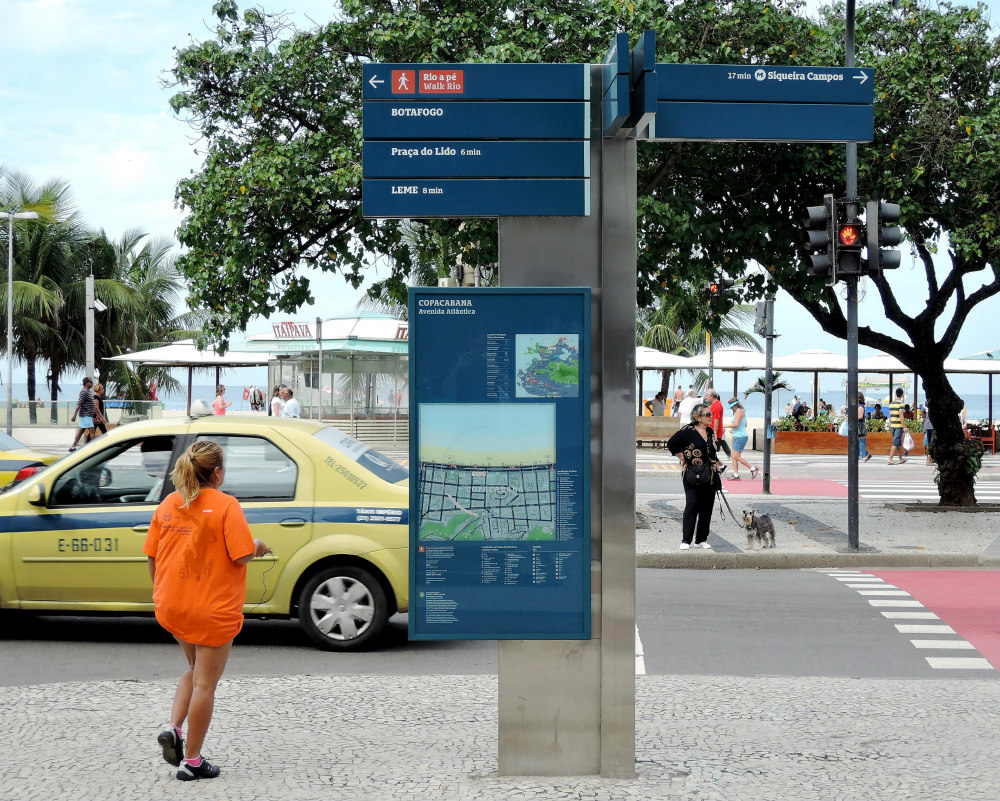
In addition, Applied tries to bring a sense of the place in the information they are giving to people, and engages with the human brain. “There are only two ways for the human brain to engage with a wayfinding system: by tapping into people’s needs, if somebody needs something it will engage with it, and will work it out. The other way is if they are interested.”
To get people interested, says Fendley, “you have to bring an element of beauty and care in the design because people respond to virtues.” Fendley’s elegant dark blue street signs guide the walkers through their journeys, attracting attention thanks to the yellow bar at the top. The yellow colour stands for walking, while blue is for the tube and red is for the buses.
To fulfil a need, they are strategically located where people look for destinations, such as churches, look for landmarks, etc. The information on the street signs create a sense of place and a map locates you in the area displaying a radius of 15-minutes with the many nearby places you can reach walking within that time frame.
Fendley’s 15-minutes, though, is not to be confused with the “15-minute city” concept, his measure focuses on overall mobility, moving people around 32 boroughs in London,who at some point decide to leave the car at home, save the cab or the tube. I ask Fendley if places like the Highline in New York or the recently approved Camden Highline wouldn’t have been an opportunity to integrate them as part of the mobility concept of the city. “This place is a promoter for walking, not necessarily a deliverer,” he says. But certainly it could have been both.
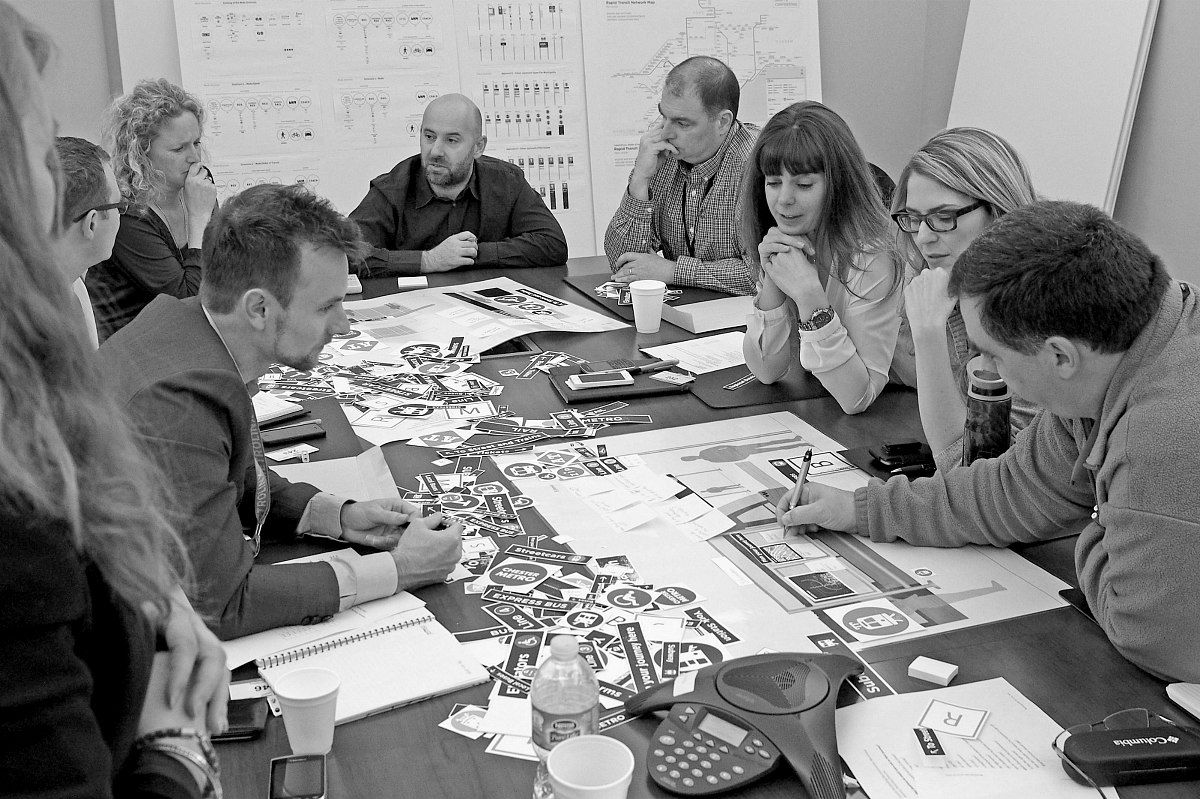
Before Fendley and I headed for our walk, I mentioned to him that, given the popular movements in cities to get rid of car-centric infrastructure and endless driving, planners in the US are looking to European cities to find inspiration for the future. But I wonder how American cities could do the right thing from the beginning to integrate walking?
“I am astonished by how quickly Americans can change things,” he adds, “due to the urban sprawl, cities are going to need an important development of the public transit network and still they have got lots of fragile independent systems that need to be integrated.” Fendley’s next challenge is the Bay Area in San Francisco built with 27 different transit agencies, many small ones and seven big ones. All deal with customers differently and they all run different systems.
“So our project is not for the hardware infrastructure, we are there for the software infrastructure. We are looking at the project harmonising 27 systems and finding a good way really to get people’s information and be agile with the environment. The project was re-started last year and is very much in its infancy, but if we create a mental model where these networks all fit together, you could get across the Bay Area on transit. But now at the moment you wouldn’t do that.” The number of people travelling on transit in the Bay Area is about 5% compared to 55% in London.
Fendley is convinced that wayfinding systems will get more people to walk. “Humans were not designed for cities, we were designed for the savanna. We like long distances, long views, rivers and mountains, it gives you a sense of safety. A lot of this comes from a core instinct in humans through many years of human evolution,” he says.
Our urban lives are just a tiny piece of history compared to the entire period of human evolution that still keeps us eager to walk, to navigate our way and to reach our destination.
